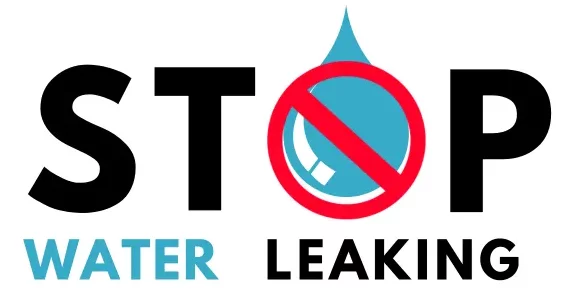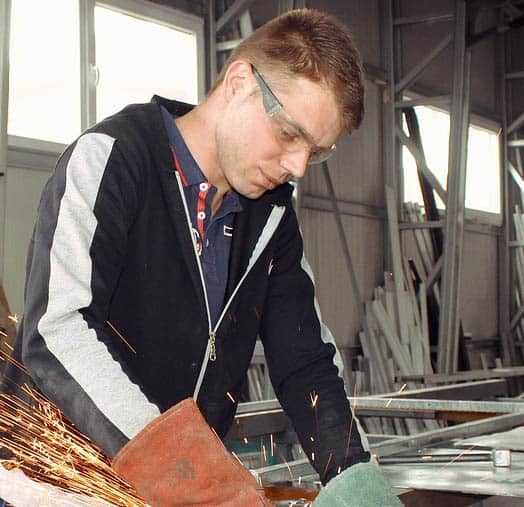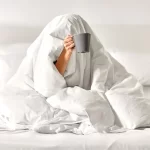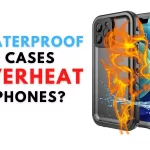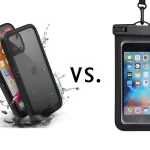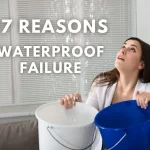Waterproofness is the externally added characteristic to the specific cloth material. These kinds of cloth materials are made with specific synthetic row material. Hence waterproofness and breathability can be controlled as designers need. There are dozens of waterproof fabrics on the market. But these 09 are my favorite waterproof and breathable fabric every time. So let’s check all in detail.
Waterproofness is more than 15000mm, and breathability is more than 10000 g m−2 d−1 are the best waterproof and breathable fabric that you can buy for heavy rain and wet snow. In addition, you should know the durability and abrasion resistance of the fabric when you buy it.
You should have specific knowledge about waterproof fabric when you buy it because its classifications and categories are slightly different from each other.
Waterproofing and Breathability Values of Fabrics
| Brand | Waterproofness (mm) | Breathability (gm/m²/day) |
| GORE-TEX 3L | >28,000 | 17,000 |
| GORE-TEX Pro 3L | >28,000 | 25,000 |
| GORE-TEX Paclite 2.5L | >28,000 | 15,000 |
| GORE-TEX C-Knit 3L | >28,000 | >20,000 |
| eVENT 3L | 30,000 | >20,000 |
| MARMOT NanoPro 2.5L | >THAN 10,000 | 17,000 |
| NORTH FACE Hyvent 2.5L | >THAN 15,000 | ~12-15,000 |
| PATAGONIA H2No 2.5L | 10-20,000 | ~12-15,000 |
| PERTEX Shield+ 2.5L | 20,000 | 20,000 |
Parameters for the Waterproofing and Breathability

When you buy a waterproofing fabric, you may not know about its usage by comparing the specifications. So let’s see what the specification and design limits for the waterproof fabric are.
Waterproofness
Waterproofness is the most important factor in this field. Waterproof fabrics are made with specific cloth material. When you wear it, it should be non-wet and with more comfortability. Waterproofness has a global standard. You can see there is a number such as 15000mm or 15K water resistance. What does this mean?
Actually, this means how much water pressure can be held with your fabric. It is measured with the 1-inch vertical tube is filled with water, and the bottom is covered with the appropriate fabric material. Nowadays there are high technology machines. But the basics are the same. You can see how it is important for the fabric’s waterproofness and how it has been classified according to the fabric type below.
When I went to buy a rain jacket I could see 10K,15K, 20K values. Among them I bought 15K rainy jacket. Do you know why I bought 15K rain jacket?
| Waterproof rating hydrostatic head (mm) | Resistance Provided | Weather Conditions |
| 0–5000 mm | No resistance to some resistance to moisture | Light rain, dry snow, no pressure |
| 6000–10,000 mm | Rainproof and waterproof under light pressure | Light rain, average snow, light pressure |
| 11,000–15,000 mm | Rainproof and waterproof except under high pressure | Moderate rain, average snow, light pressure |
| 16,000–20,000 mm | Rainproof and waterproof under high pressure | Heavy rain, wet snow, some pressure |
| 20,000 mm over | Rainproof and waterproof under very high pressure | Heavy rain, wet snow, high pressure |
According to this table, you can observe the weather conditions and resistance provided are dependent on the amount of water rating. This is a global standard method with developing ASTM.
When clothes deal with water, we can see waterproof, water repellent and water resistant fabrics. Those are really different. See the difference between Water Repellent Fabrics and Waterproof Fabrics.
Breathability
This is the comfort of the fabric. In brief, breathability is transferring vapor inside and outside. Normally a human produces perspirations due to work. So these include water as well other salts, oils, acids, and vapor. This vapor should be transferred to the outside. Else inside will be sweat.
How Breathability of the Waterproof Fabrics Work?
In this context, liquid water should be stop and gas should be transferred. Microporous helps in this process. Normally microporous materials have pores with much lower dimensions (2–50 nm) than the smallest raindrop (fog-100μm) but bigger than the water molecules (0.1–10 nm).
| Range | Performance (g m−2 d−1) |
| Low | <10,000 |
| Moderate | 10,000 to 20,000 |
| High | >20,000 |
You can see how much water can be transferred with related to range. According to the work rate, perspirations is varied. Hence breathability should be varied according to that.
Read More About – How Much Does it Cost for Waterproof Fabric?
Considering all these factors, you must choose your waterproof jacket.
01. GoreTex

GoreTex is the first commercial supplier of waterproof fabric. Now there are so many product categories with a wide range of products. GoreTex Classic 2L and 3L, GoreTex Paclite 2.5L, GoreTex Pro 3L, and GoreTex C-Knit 3L (which is their latest product). Classic GoreTex fabrics are made using an ePTFE membrane. In addition to the ePTFE membrane, an anti-contaminant PU layer is coated, and the shell displays a hydrophilic monolithic character.
GoreTex products are a wide range of rain jackets, outwears, hiking shoes, footwear, etc. Check for more products.
02. Dry Vent
Dry Vent was named as Hy Vent in the past but now it is Dry Vent. This is another brand developed by the North face fabric. It is a hydrophilic polyurethane-coated fabric. Hy Vent is made in 2L, 2.5Land 3L construction fabric. These textiles are developed as high waterproof and breathable fabrics. So many kinds of product ranges can be found here.
03. eVent
eVent fabrics can be categorized DVAlpine, DVStorm, ve DV Elite are usually made in 3L and have a microporous structure. eVent fabrics use an original expanded PTFE membrane covered with an additional PU layer. Some products are also lined with an oleophobic and hydrophobic chemical layer to remain air permeable.
| Product Category | Mainly Used for | Waterproofness | Breathability (g/m2) | Air Permeability |
| DVAlpine | Expeditions, High altitude, Hunting, snow sports, and workwear | 30K | 10000 g/m2 | 0.06 cfm |
| DVStorm | Backpacking, Climbing, Cycling, Fishing, Hiking, Hunting, Lifestyle, Snow Sports, Trekking | 20K | 20,000 g/m2 | 30,000 g/m2 |
| DV Elite | Climbing, Cycling, Hiking, Nordic Ski, Trekking, Running | 10K | 0.1 cfm | 0.2 cfm |
04. Patagonia
Patagonia has developed a 2.5L H2No shell fabric, and it combines a water repellent shell fabric with a WB membrane and protective top coat barrier. It is lightweight and quite compressible.
05. Marmot

Marmot NanoPro is 2.5L, microporous, coated fabric. It is with new coating technology that improves breathability up to 43% more than the previous version, Precip 2.5L construction, and consists of a combination of both types of fabric coatings. Inside protein coating will make you drier and more comfortable next to the skin and has no protection scrim. The first Mormon membrane was a PU membrane with a monolithic character. It has the added advantage that PU is slightly hydrophilic, which means it will absorb some of the moisture that would otherwise be liquid condensate on the inside o the garment.
06. Sympatax
Sympatax is with two layers. The base layer is conductive, and Wicking properties and mid-layers are with insulating and heat regulation function, and top layers are waterproof, breathability and windproof. its thickness is 5-25 μm, and the company produces Eco-Friendly waterproof fabrics also
07. Polartec
Polartec Neo Shell and Power Shield Pro are membrane-based products. Those are protected with special insulations. Mont Hydronaute & Hydronaut Pro, PERTEX Shield +, Colombia Omni-Tech Dry and Mini-Faille, Toray Entrant, and Dermizax are other well-known WB fabric brands.
08. Helly Tech

Helly Tech is a tough weatherproof outer layer, specially designed for the harshest conditions. It combines a DWR-treated outer fabric, a highly breathable and waterproof membrane, and often a highly breathable inner fabric, mesh, or lining.
This is a waterproof, windproof, breathable fabric designed for many reasons, such as hiking and many more.
09. Pertex
Pertex was registered in 1979, and the idea was Hamish hamilton. Pertex Shield fabrics are the main product series related to waterproof fabrics. Currently, they are partnered with huge brands such as Patagonia, Marmot, Rab, etc., to produce more products for the customers. Pertex is a lightweight waterproof, breathable finish with outstanding packability.
The versatile 2, 2.5, and 3-layer constructions combine lightweight face fabrics with waterproof, windproof, and breathable membranes. A durable water repellent (DWR) finish applied to the face fabric sheds rain and snow, which helps to maintain breathability.
If you need more waterproof fabrics you can try these 21 Waterproof and Water Resistant Fabrics
Conclusion
After considering all factors, you can select suitable waterproofing and breathable rating and select the fabric for your task. Every fabric is not good for all. There are fabrics with suitable features, so you better select the one you need.
Related Topics
